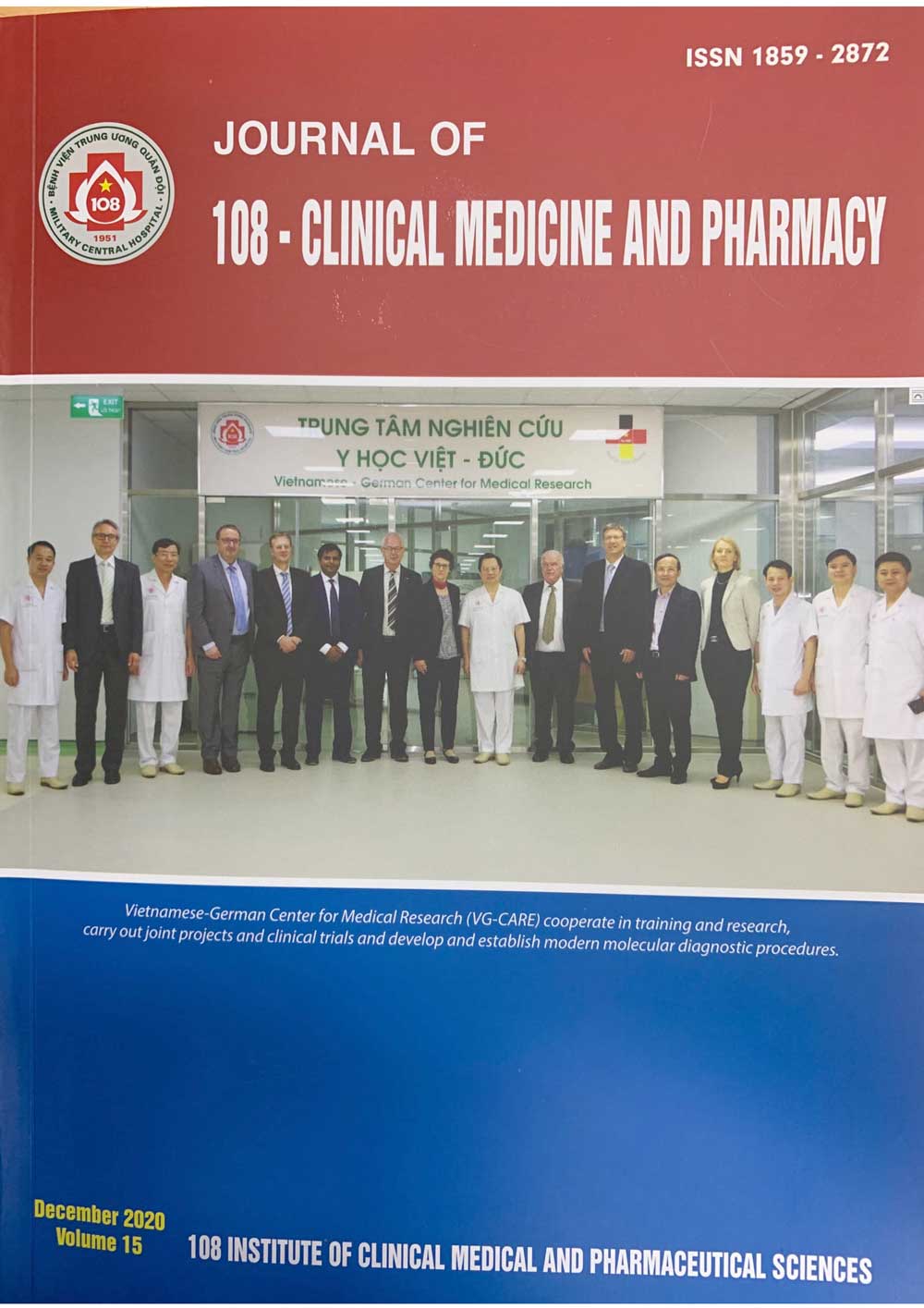The role of qualified elastography ultrasound in assessment of malignant thyroid nodules
Main Article Content
Keywords
Abstract
Objective: To study the stiffness characteristics of benign and malignant thyroid nodules on elastography ultrasound and the evaluation of elastography ultrasound in the diagnosis of thyroid cancer. Subject and method: This study included 535 patients with 557 thyroid nodules confirmed by histopathology, from September 2019 to August 2020. All patients were evaluated by elastography ultrasound, using US machine (GE Logiq S8, US) and ROI Qualified Elastography, the class the score of stiffness according to the Rago T.‘s score (2007). Result: Of 557 thyroid nodules, 7 nodules with stiffness score 1 (1.3%), 78 nodules with stiffness of score 2 (14.0%), 197 nodules with stiffness of score 3 (35.4%), 170 nodules with stiffness of score 4 (40.3%), 105 nodules with stiffness of score 5 (18.8%). In the group’s low stiffness (score 1, 2), the rate of benign thyroid nodules was higher than that of malignant’s group with p<0.05. In contrast, in the group’s high stiffness (score 4, 5), the rate of malignant thyroid nodules was higher than benign’s group with p<0.05. In the group’s medium stiffness (score 3), the difference between groups of benign and malignant thyroid nodules was not statistically significant (p>0.05). Diagnosis of a malignant thyroid nodules by elastography ultrasound had a sensitivity of 57.4% and a specificity of 91.3%. Conclusion: The stiffness of the malignant thyroid nodules was higher than that of thyroid nodules by elastography ultrasound; The diagnostic value of the malignant thyroid nodules had a sensitivity of 57.3% and a specificity of 91.3%.
Article Details
References
2. Moon HJ et al (2012) Diagnostic performance of gray-scale US and elastography in solid thyroid nodules. Radiology 262(3): 1002-1013.
3. Dudea SM and Jid CB (2015) Ultrasound elastography in thyroid disease. Medical ultrasonography 17(1): 74-96.
4. Rago T et al (2007) Elastography: new developments in ultrasound for predicting malignancy in thyroid nodules. The Journal of Clinical Endocrinology & Metabolism 92(8): 2917-2922.
5. Arslan H et al (2017) Contribution of ultrasound strain elastography to the differentiation of benign and malignant thyroid lesions: Randomized controlled study. Van Medical Journal 25(1): 51-56.
6. Xing P et al (2011) Differentiation of benign from malignant thyroid lesions: Calculation of the strain ratio on thyroid sonoelastography. Journal of ultrasound in medicine 30(5): 663-669.
7. Kwak JY and Kim EK (2014) Ultrasound elastography for thyroid nodules: Recent advances. Ultrasonography 33(2): 75.
8. Cantisani V et al (2015) Diagnostic accuracy and interobserver agreement of quasistatic ultrasound elastography in the diagnosis of thyroid nodules. Ultraschall in der Medizin-European Journal of Ultrasound 36(02): 162-167.
9. Dighe M et al (2013) Efficacy of thyroid ultrasound elastography in differential diagnosis of small thyroid nodules. European journal of radiology 82(6): 274-280.
10. Park AY et al (2015) Shear wave elastography of thyroid nodules for the prediction of malignancy in a large scale study. European journal of radiology 84(3): 407-412.
11. Afifi AH et al (2017) Diagnostic accuracy of the combined use of conventional sonography and sonoelastography in differentiating benign and malignant solitary thyroid nodules. Alexandria Journal of Medicine 53(1): 21-30.
 ISSN: 1859 - 2872
ISSN: 1859 - 2872
